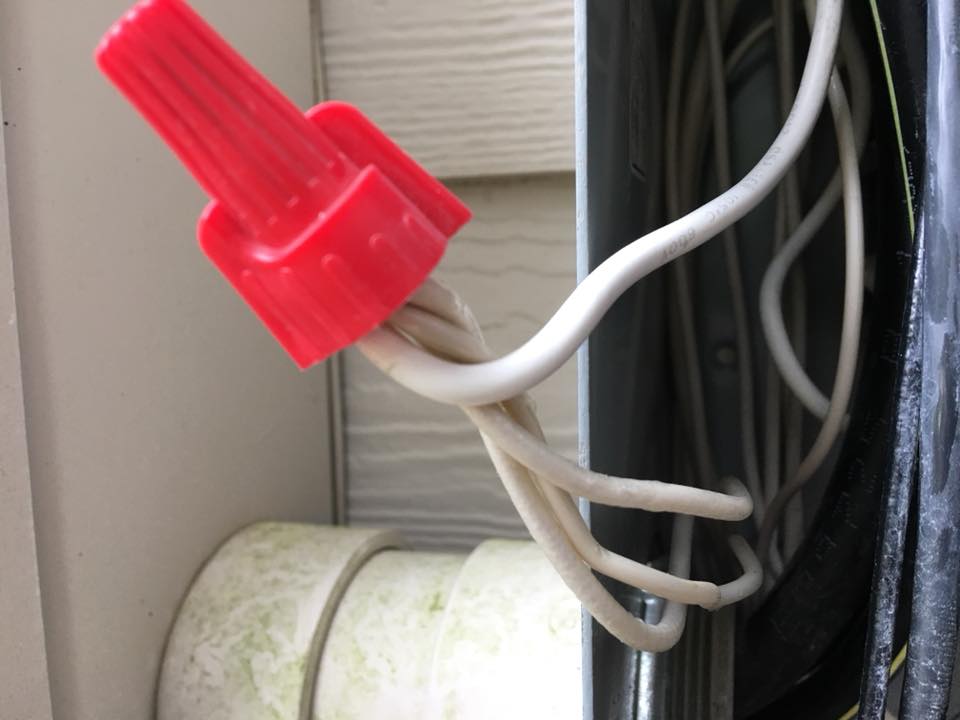CuriousHomeInspector
Member
- Location
- Little Rock, AR, USA
Here is a photo for consideration:

This was found as a "repair." An inspector reported finding multiple neutral conductors terminating under the same terminal screw on a bus bar in an electrical panel.
To me it doesn't feel right. If they're all in the same phase then of course the pigtail can experience 45 amps of current (30 if one of the circuits is out of phase), but here is my question:
Assuming that the "pigtail" is properly sized for the current it can experience, assuming that the wire isn't salvaged from the inside of another cable (wire is marked, so likely is not), and assuming that all non-grounded conductors involved in this configuration have common trip bars at the breaker what would the NEC violation (if any) be? (2014 or 2017)?
Thanks for allowing me to use your collective brain power.

This was found as a "repair." An inspector reported finding multiple neutral conductors terminating under the same terminal screw on a bus bar in an electrical panel.
To me it doesn't feel right. If they're all in the same phase then of course the pigtail can experience 45 amps of current (30 if one of the circuits is out of phase), but here is my question:
Assuming that the "pigtail" is properly sized for the current it can experience, assuming that the wire isn't salvaged from the inside of another cable (wire is marked, so likely is not), and assuming that all non-grounded conductors involved in this configuration have common trip bars at the breaker what would the NEC violation (if any) be? (2014 or 2017)?
Thanks for allowing me to use your collective brain power.

